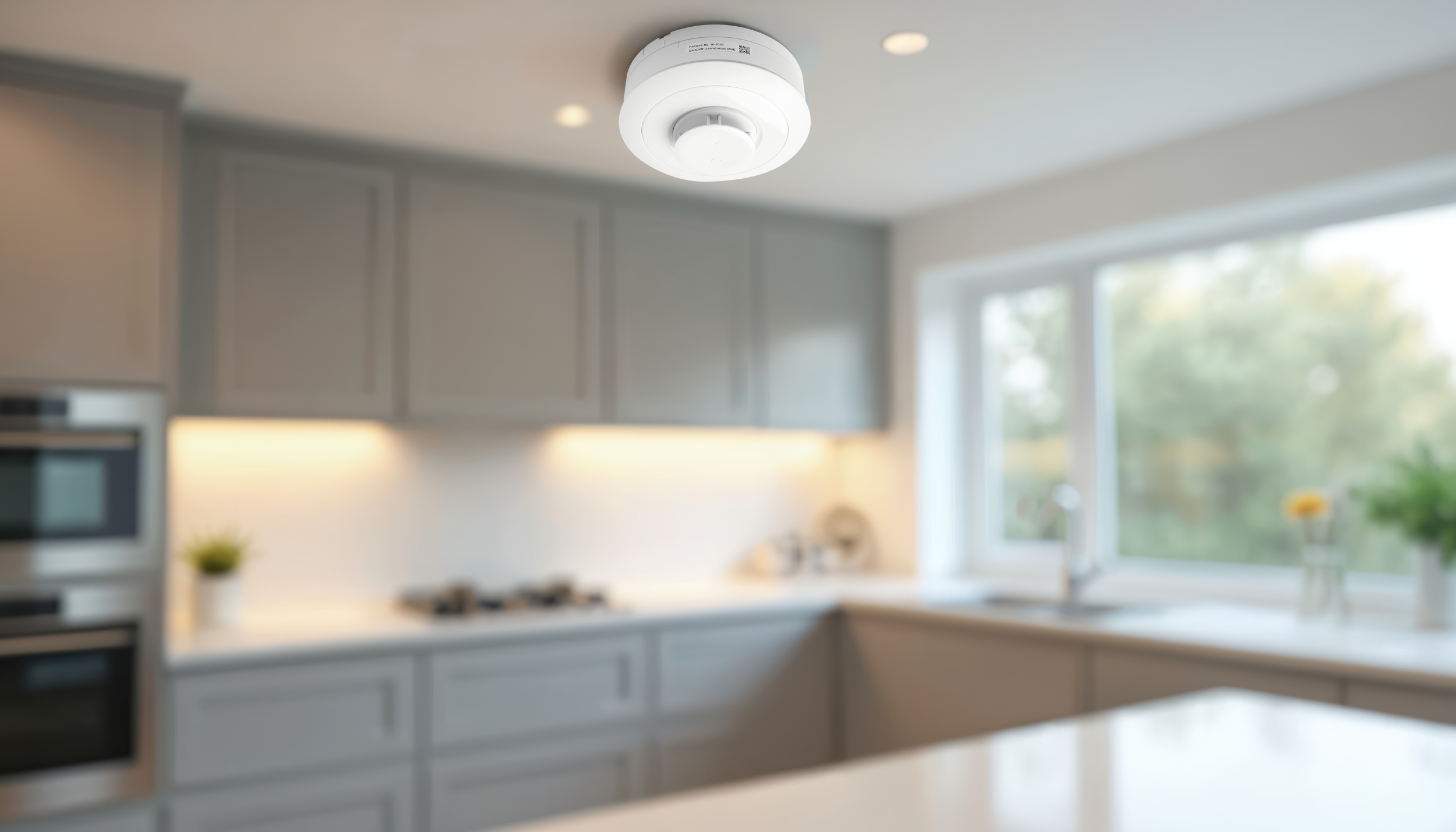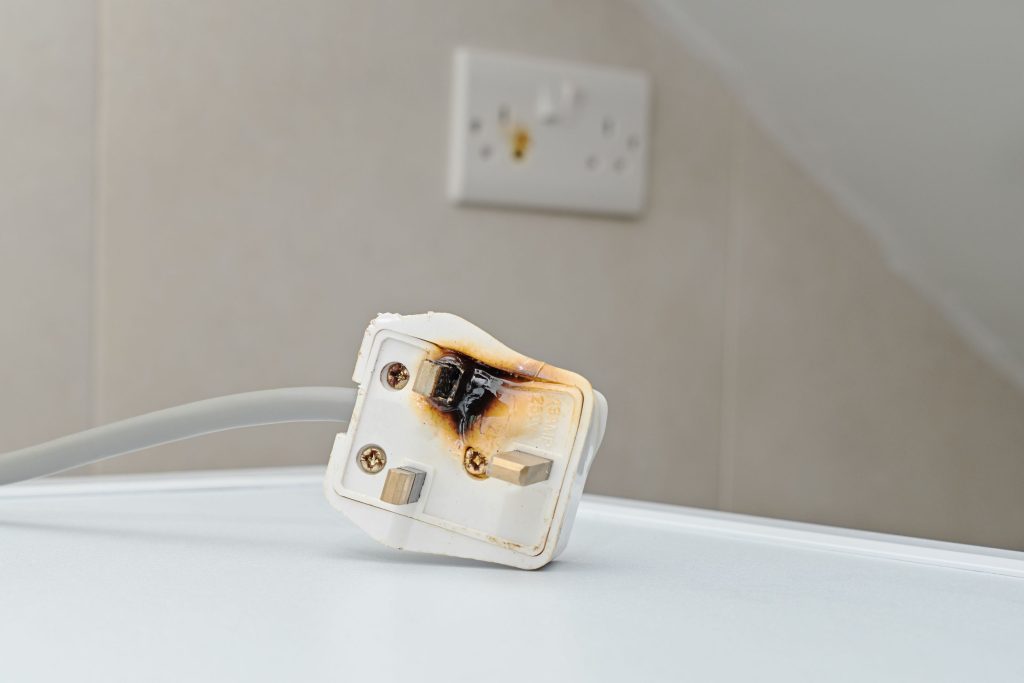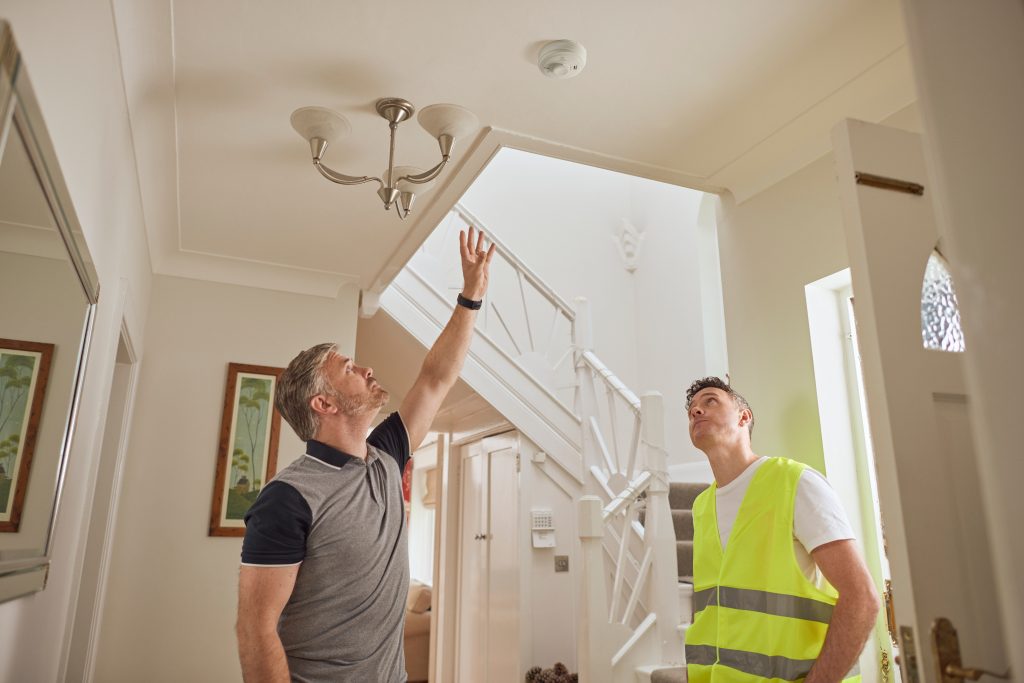Best Alarms for Each Room in the Home

There are many types of fire and carbon monoxide (CO) alarms that may be used for different rooms in your house. If you’re trying to choose the best fire alarms for home protection or compare the best smoke alarms for the home, it helps to understand how each room has different risks. Smoke, heat, and carbon monoxide alarms each play a role, and proper placement ensures maximum protection and fewer false alarms. Not all alarms are suitable for every room, and you should consider certain factors when choosing the best fire alarms for your house.
We offer a range of alarms that consider the needs of various room types and scenarios, and our advanced SmartLINK and HomeLINK technology enables a more modern and future-proof approach to home life safety. Whether you’re looking for complete home smoke detector systems or upgrading an existing fire alarm system, choosing the best alarm for each space is essential.
The advice in this article is specific to owner-occupied properties.
Why Room-Specific Alarms Matter
The rooms in your home will each have different fire and air conditions, requiring different types of alarms. For example, kitchens are often subjected to steam, heat, and cooking fumes, while garages could contain exhaust fumes. If you’re wondering what is the best alarm for a particular room, the answer will depend on these conditions, overall gas safety at home, and your wider fire protection for homes strategy.
There are two types of smoke alarm: optical smoke alarms and ionisation alarms. An optical smoke alarm uses infrared light to detect smoke. These are less susceptible to interference from cooking fumes than ionisation alarms. The optical sensor is best suited to detect slow, smouldering fires, and is often recommended when people ask what type of smoke alarm is best for kitchen-adjacent or living spaces.
Heat alarms use a thermistor to detect fast, flaming fires. They trigger at a certain temperature and are not triggered by smoke. Heat alarms are much less prone to false activations in certain rooms and are often part of the best alarms for homes where nuisance alarms from cooking are a concern.
Carbon monoxide is a tasteless, colourless, and odourless gas. In the event of a CO emergency, having a CO alarm will alert you as soon as dangerous levels are present and rising. Negative effects of CO can be present from 150ppm, and can progress into headaches, dizziness, unconsciousness, and even loss of life. Choosing the best carbon monoxide detectors for home use and understanding the best place for carbon monoxide alarms is therefore just as important as choosing smoke alarms.
Once you’ve determined the coverage required for the house, it’s essential to ensure they are installed in the correct place. Learn more about where to install your fire and carbon monoxide alarms.
What Type of Heat Alarm is Best for the Kitchen
When installed in a kitchen, a smoke alarm can cause frequent false alarms due to cooking fumes and steam, no matter the sensor type. For this reason, when people ask about the best smoke alarms for kitchens, the answer is usually that a dedicated heat alarm is a better choice.
The best sensor to choose for a kitchen is therefore a heat alarm. Fires caused in the kitchen are most often fast, flaming, and develop high temperatures.
When installing a heat alarm in the kitchen, the alarm should be sited on the ceiling, as centrally as possible within the room, considering the location of the alarm and sources of heat such as a cooker or hob. The heat alarm should not be installed directly above an oven, as the heat build up when opening an oven door may cause a false alarm.
The Ei3014 Heat Alarm is mains-powered and can be interconnected via hardwire or with other radio frequency (RF) alarms in the system when implementing the Ei3000MRF SmartLINK Module. For a mains-powered alarm with a user-replaceable battery backup, it’s the Ei144e Heat Alarm, this can also be hardwired or wirelessly linked with the Ei168RC RadioLINK Base. For a battery powered heat alarm, opt for the Ei630iRF RadioLINK+ Battery Heat Alarm, with RF built in. If the kitchen contains gas, a heat and carbon monoxide multi sensor can be used. This is the Ei3028 Multi-Sensor Heat & CO Alarm. For a battery heat alarm, opt for the Ei630iRF RadioLINK+ Battery Heat Alarm, with RF built in. These are popular options when customers look for the best heat alarms for kitchens with easy interconnection.
Read more kitchen fire safety tips.
Main Living Areas – Installing the Right Smoke Alarm for Everyday Use
For living areas such as a living room or lounge (specifically the ones most used), a smoke alarm is recommended. Living spaces tend to have a high quantity of soft furnishings, which can ignite and the fire grow quickly out of control. According to the Ministry of Housing, Communities & Local Government, faulty appliances and leads caused 3,486 fires within dwellings in the year 2024/25. Good home fire safety practice is to treat these rooms as high priority for home fire detection.
For an early warning and better audibility, it is recommended to have all alarms interconnected to the smoke alarms in the escape routes.
The Ei3016 Optical Smoke Alarm would be an appropriate mains-powered option here; this can be linked via hardwire or with the Ei3000MRF to interconnect using RF. However, for an alarm with a user-replaceable battery back-up, use the Ei146e Optical Smoke Alarm, hardwired or with the Ei168RC RadioLINK Base to connect to other RF units. If you’re looking for a battery-powered option that can be interconnected with other RF devices, opt for the Ei650iRF RadioLINK+ Battery Optical Alarm.
Best Smoke Alarms for Bedrooms
According to GOV.UK, you are more at risk of harm from a fire when asleep. Having a smoke alarm installed in or near bedrooms and interconnected to other alarms in the house is advised for detection and early warning, to achieve fire safety in bedrooms.
When deciding on a smoke alarm for the bedroom, the Ei3016 Optical Smoke Alarm is the mains powered option with a tamperproof lithium battery. This can be linked via hardwire or using the Ei3000MRF modules via RF. Alternatively, the Ei146e Optical Smoke Alarm would be a cheaper alternative, with a user-replaceable battery backup. As before, this can be interlinked using a hardwired interconnection or via radio frequency with the Ei168RC base. For a battery powered device, the Ei650iRF would be the best option.
For those who are hard of hearing, we have a range of products with visual and sensory signals to alert you, like our Ei170RF RadioLINK Alarm Module for the Deaf & Hard of Hearing. The module contains both an LED strobe light and a vibrating pillow pad, which activate when interconnected alarms are triggered, alerting users who may not benefit as much from the audibility of a typical smoke alarm. We would recommend these in all habitable rooms for a hard of hearing occupant.
Hallways and Landings – Multi-sensor Alarms for Escape Routes
Hallways and landings connect all the main rooms in your house and are key escape routes in the event of a fire, and so choosing the correct alarms is essential.
For hallways and landings, a smoke or fire alarm should be installed on each storey and sited as centrally as possible. You can find more guidance in Aico’s guide to alarm siting in hallways and landings.
A smoke alarm such as the Ei3016 Optical Smoke Alarm or Ei146e Optical Smoke Alarm is recommended. To enable RF interconnection, add the Ei3000MRF SmartLINK Module to the Ei3016, or the Ei168RC RadioLINK Base to the Ei146e. A battery powered alternative is the Ei650iRF.
For the widest detection of all fire types, choose the Ei3024 Multi-Sensor Fire Alarm to detect both smoke and heat. This is suitable in all locations where would use a standard smoke alarm.
Garage – Combined Heat and Carbon Monoxide Alarms
For garages, there are two sensors which are recommended: heat alarms for fire risk, and CO alarms if vehicles or fuel-burning appliances are present. Garage fire safety is important in the home, particularly where vehicles and tools are stored.
The same rules apply when siting a heat alarm, such as the Ei3014 Heat Alarm, Ei144e Heat Alarm, or Ei630iRF RadioLINK+ Battery Heat Alarm in the garage: the alarm should be on the ceiling and as centrally as possible in the room.
A carbon monoxide alarm should also be sited on the ceiling if the room contains a fuel-burning appliance. It should be fitted 1-3 metres from all potential sources of CO, as well as 300mm from walls, light fittings, or other obstructions. If the fuel-burning appliance is in a confined space, then the alarm should be sited on the ceiling just outside of the room within the 1-3 metres.
If you do need to fit both a heat and carbon monoxide alarm in the garage, we would recommend the Ei3028 Multi-Sensor Heat & CO Alarm, which allows two sensors from one unit. With the addition of the Ei3000MRF SmartLINK Module, the alarm can be interconnected with other RF alarms in the property.
Alternatively, you can use the Ei3014 or Ei144e Heat Alarm, and a separate Ei3018 CO Alarm. The battery-powered options for covering a garage with a fuel-burning appliance include the Ei630iRF RadioLINK+ Heat Alarm and either the Ei208 or Ei208WRF. If the alarm would not be heard whilst in a deep sleep, we would advise interconnecting an Ei208WRF RadioLINK+ Battery Carbon Monoxide Alarm with an additional CO detector within the property.
Loft or Attic – Install a Fire or Smoke Alarm for Electrical Fires
Attics often contain wiring, insulation, or stored items that can pose a fire risk. Good loft fire safety practice involves both the right alarm type and correct siting.
When choosing the best alarm for the attic, a smoke alarm with dust compensation technology is recommended. However, for improved resistance to nuisance activations, a multi-sensor fire alarm is the best option. A heat alarm alone is not recommended.
The Ei3024 Multi-Sensor Fire Alarm would be the preferred option as the smoke and heat sensors will work together to detect fire, and will also reduce the chances of false activations. For a battery-powered RF option, go with the Ei660iRF RadioLINK+ Multi-Sensor Fire Alarm. Alternatively, the Ei3016 Optical Smoke Alarm, Ei146e Optical Smoke Alarm, or Ei650iRF RadioLINK+ Battery Smoke Alarm would be acceptable.
Utility Room or Boiler Room – Carbon Monoxide Alarm
A carbon monoxide alarm should be placed in any room that contains a fuel-burning appliance such as a boiler or gas heater.
The alarm should be situated on the ceiling, 1-3 metres from the source of CO, and 300mm clear of walls, light fittings, or other obstructions. If the fuel-burning appliance is in a confined space such as a small cupboard, the alarm should be installed just outside the room.
The mains-powered option for this would be the Ei3018 Carbon Monoxide Alarm (the Ei3000MRF SmartLINK Module can be added to allow for RF interconnection). For a battery-powered alternative, take a look at the Ei208 or Ei208WRF RadioLINK+ Battery Carbon Monoxide Alarm, basing the decision on whether the detector is linkable on audibility throughout the property.
Learn how to site a carbon monoxide alarm.
Apartments and Smaller Homes – Simplify with Interlinked Systems
Choosing the best alarms for your apartment or smaller homes can be daunting, and having work done in a compact living space can be inconvenient.
When choosing the best alarms for your apartment, the sensor types remain the same as when choosing for a house. A heat alarm should be used in a room that is solely a kitchen. Where a room is used as both a kitchen and a living space, a multi sensor fire alarm is recommended when centrally situated. In bedrooms and hallways, a smoke alarm should be installed. Where a room contains a fuel-burning appliance, a CO alarm should be placed. If the appliance is in a small cupboard, the alarm should be situated just outside of it.
With our 600 Series, fire alarms are powered by a 10-year lithium battery and are completely wireless, with selected models utilising radio frequency. For a heat sensor, opt for the Ei630iRF RadioLINK+ Heat Alarm. The Ei650iRF RadioLINK+ Optical Alarm would be the appropriate option for an optical smoke sensor. Where both a heat and smoke sensor are necessary, go for the Ei660iRF RadioLINK+ Multi-Sensor Fire Alarm. Finally, for a battery-powered carbon monoxide alarm with RF interconnection, it’s the Ei208WRF RadioLINK+ Battery Carbon Monoxide Alarm.
Conclusion
Choosing the best fire and carbon monoxide alarms for your home is essential to ensure effective and appropriate detection. From deciding what is the best alarm for your kitchen, to planning bedroom smoke alarm placement, hallway smoke detector placement, and checking how many smoke alarms per floor, it all comes down to matching the sensor type, siting, and interconnection.
Our alarms are individually tested at multiple points in their production to ensure reliability and high-performance.
Your current fire and CO alarm systems might be insufficient or expired. Consider the 3000 Series for increased reliability, the 140e Series for affordability, or the 600 Series and 200 Series for ease of installation.


